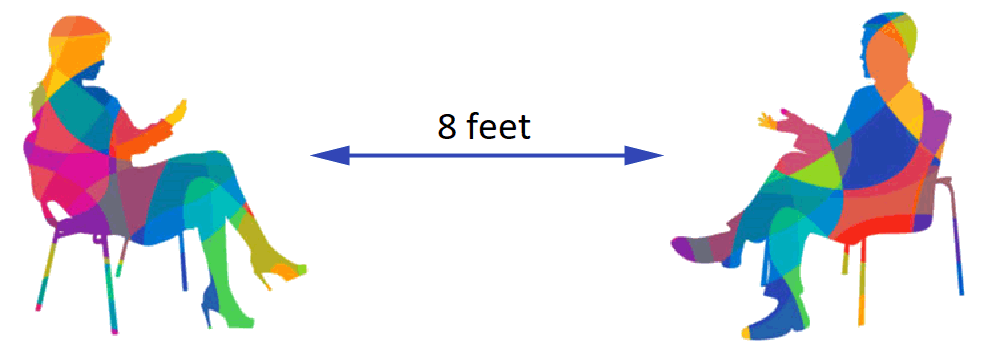How am I offering therapy during the pandemic?
As of early December 2020, 1 in 40 people in Colorado was infected with SARS-2-COV, the coronavirus that causes COVID-19, so I am being cautious.
Most session are via teletherapy, either by:
- telephone or
- secure videoconference.
Occasionally in-person sessions take place outdoors, if:
- weather permits,
- we sit 8 feet apart, and
- you feel that my office patio is sufficiently private.
Your privacy is important. Obviously, if someone walked by within earshot, we would stop talking until they moved on.
Most trails and trailheads appear to be too crowded to allow for effective privacy or social distancing, so walking therapy is not a safe option at this time.
Colorado's Department of Regulatory Agencies, which regulates mental health providers, requires that both therapist and client wear masks for in-person indoor office appointments.
Scientifically-based information
I want my clients to have accurate information about the virus and public health. Here are some links to scientifically-based COVID‑19 information that may be helpful:
Note: information from studies that have been peer-reviewed and published is more likely to have been vetted carefully by fellow scientists.
When will I resume seeing clients in person indoors?
Benchmarks for when I believe it will be safe to offer in-person therapy indoors:
-
When the counties in the Front Range have seen a decline in new case numbers for 14 days in a row.
I am basing this decision on case numbers reported by the CO Department of Public Health & Environment data.
(As of 12/2020, the number of new cases in the Front Range has continued to rise.)
-
When the number of new cases in Colorado’s Front Range counties drops below 50 new cases in a day for 14 days in a row.
(As of 12/7/2020, the number of new cases for the last 24 hours in Colorado was 3,238.)
-
When there is an effective treatment for COVID-19.
There is some promising research, but we do not have a treatment as of December 2020.
-
When anyone who wants or needs to be tested for COVID-19 can be tested using an accurate test
and contact tracing is in place.
-
When enough people have been vaccinated that COVID-19 can no longer spread effectively.
There is recent good news on vaccines, and there are other factors to think about.
Realistically, these conditions may not be met until well into 2021.
I believe Colorado needs to make additional progress in curbing the the spread of COVID‑19
before indoor therapy sessions can safely resume.
Go from “I can’t sleep” to “A Good Night’s Sleep.”
Go from “I can’t face today” to “I’m enjoying vital, meaningful days.”
Call 720‑551‑8444
